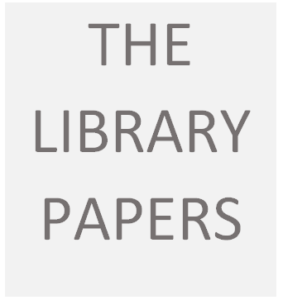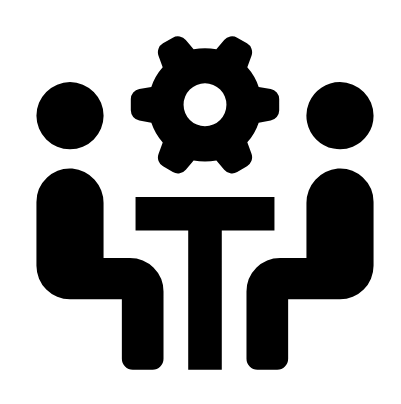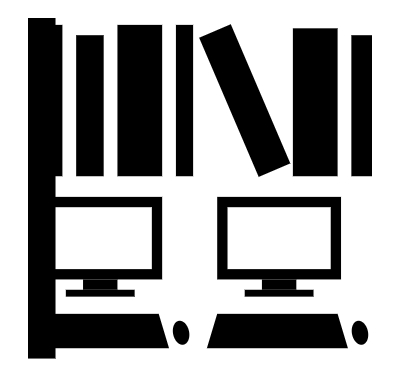Theme 2
Managing and Evaluating Reference Services
Lesson 5 Reference interview: Cooperative Program Planning and Teaching for Personalized Inquiry
The readings for this lesson could be divided into two different visions for the function of the library, and two different visions of the librarian’s role
Riedling’s focus in Chapter 9 is exclusively on the relationship between the librarian and the student, with some consideration given to the setting—you can see this in the Table of Contents, which identifies sections for The Patron, The Setting, and The School Library Media Specialist (which I believe is an older term put forward to describe the changing role of school librarians before the term ‘School Library Learning Commons’ became widely used to refer to school libraries, and where the role is now referred to as simply ‘Teacher-Librarian’).
But getting back to the topic of the reference interview, Riedling identifies three types of query which require three different approaches: ready-reference, research, and reader advisory. Her point that it is important for the librarian to establish exactly what purpose the patron has in mind when inquiring about resources, and that the librarian be encouraging, supportive and respectful in eliciting the information, is well-taken. But although she is insightful and clear about the importance of establishing strong, courteous relationships with patrons, I think Riedling’s focus on the individual student would be impractical and inefficient in a school library in terms of supporting research.
There are other ways to categorize the reference interview. The course notes refer to Katz’s four types of reference interviews: direction, ready-reference, specific search, research. According to Katz, giving simple directions about where materials are located in the library can take up to 50% of a librarian’s time (indicating that a more effective manner of shelving might be in order, although this is probably a topic for a different discussion); specific search questions require more information than Ready Reference, but usually entail helping a patron who knows the topic they are interested in to locate the resources themselves; and research queries, which involve “trial and error searching or browsing” to locate a wider range of resources. However, the focus here, as with Riedling, is still on the individual researcher.
In terms of the second part of the lesson topic, ‘teaching for personalized inquiry’ and ‘cooperative program planning,’ I found Russell (2002) more helpful: he discusses the importance of establishing collaborative relationships between teachers and the Teacher Librarian and the factors that contribute to successful collaboration, along with some canny advice about how to establish such relationships. I think it is a more effective use of Teacher Librarian time to collaborate with a subject teacher, to identify the particular type of inquiry students are expected to engage in, to locate the resources they need to accomplish it, and to provide group instruction in methods and techniques.
Lesson 6 Managing the Reference Collection
The Role of the TL
The course notes identify three main areas of responsibility for the Teacher Librarian: program and instruction, learning resource management, and leadership in resource-based learning. Program and Instruction refers to collaborative teaching, promoting reading and language development and supporting integration of instructional technology. Resource management is about selecting, acquiring, processing and circulating resources, managing the facilities and the budget, managing staff and volunteer time, joint planning, networking with other schools, the DLRC, public libraries and the community at large; leadership could be offered in instructional design and instructional strategies, selecting resources, publicising library services, and developing library workers including student and parent volunteers.
This is a large and ambitious list. I would say that given the constraints on librarians’ time in my district, the focus is first on resource management, particularly selecting, acquiring, processing and circulating resources and managing facilities; there is less emphasis on managing staff and volunteers, although many libraries do make use of both paid technicians and volunteers. After that, there is a growing move toward developing programs for collaborative teaching, but this is only in its early stages in those few libraries which manage to find the time for it at all. There is less emphasis or expectation that librarians will have a leadership role. For many schools, the librarian is still seen as a manager of resources rather than a teacher of literacy, self-directed learning, or digital media use.
Budget
Libraries in my district have acceptable levels of funding for materials: elementary schools are given a standard amount of $2000 for libraries plus $7 per student; not sure about secondary schools. There is district-wide access to online databases and encyclopedias; I would say most libraries easily meet the acceptable number of books per student, and lots are in the exemplary category (especially given the trend to single-topic paperback reference materials). There is district-wide support for basic productivity software like word processing, spread sheets, and slide presentations. In schools that use iPads, video editing software is also available. But design programs like Illustrator and Photoshop are limited in terms of access, if they are available at all.
Organization of Reference Materials
This refers to location and access. I think Dewey doesn’t work. I like the METIS model, where resources are grouped into 26 different categories, each identified by a single letter of the alphabet according to logical subjects. Each category is also described using words, rather than numbers. I think a combination of Dewey Decimal Cataloging and METIS, with all materials, including reference materials and multi-media materials integrated with the regular collection would make for a more accessible collection.
Collection Development
When it comes to budgeting, purchasing, evaluating/selecting reference materials, Doiron’s (2002) list of stages in collection development in the course notes seems straight-forward and thorough. I think it’s important to bear in mind that these decisions need to be made in consultation with the entire school community, and take into account needs and resources of that community. And that developing a high-functioning reference collection takes time.
Lesson 7 Evaluating Reference Services
Policies and practices
Intellectual Access
From ERAC (2008): Research has shown that students learn best when instruction and resources accommodate individual differences in learning styles, abilities, needs and interests. The librarians in this district work very hard to ensure there are a variety of materials available in a variety of media and all levels.
Digital Access
All libraries in this district do provide on-line public access to their catalogues, including district-wide databases (with ID number).
Physical Access
There is a brief district policy statement on the district website regarding libraries, which says: “Conditions permitting, principals shall provide student access to the library each day school is in session, providing services during the lunch period and at least one-half hour before classes begin in the morning and after they end in the afternoon.” For the most part, school libraries in this district do provide this access.
With regard to locating items within the collection, as I said above, in my opinion, there are more effective ways of shelving materials in school libraries than the DDC. A combination of words, letters and numbers, such as the METIS system created by the Ethical Culture School would provide improved physical access. This would mean that all materials, fiction and non-fiction alike, would be integrated into the system. Fiction is sorted by genre—traditions, tales, verse, humour, mystery, adventure, scary, graphic novel, memoir, picture stories, beginning fiction and middle level fiction. Although this system is designed for elementary schools, I think it would also work at the secondary level. The drawback of this system is that it is not complex enough to allow for the kinds of fine distinctions which the DDC allows, and while this level of distinction is not usually needed in the public education system, at some point, students would need to learn the DDC (or whichever system is most prevalent in academic and public libraries). This does not seem like an insurmountable obstacle, though.
Works Cited
Click here for References
Doiron, Ray. School Libraries in Canada, 2002. Vol. 21, No. 4
ERAC. Evaluating, Selecting and acquiring Learning Resources: A Guide. Revised, 2008. https://www.bcerac.ca/resources/whitepapers/docs/ERAC_WB.pdf
Riedling, Ann Marlow, et al. Reference Skills for the School Librarian: Tools and Tips. Linworth, 2013.
Russell, Shayne. “Teachers and Librarians: Collaborative Relationships.” Bowie , (Jun 2002): , Vol. 29, Iss. 5, June 2002, pp. 35–38. ERIC Digest, www.ericdigests.org/2001-2/librarians.html.






A useful and detailed discussion that shares your new awareness, understanding and goals moving forward. By breaking it down into lesson by lesson, you can share your thoughts in an organized matter with specific sub headings that connect with the key learning and expectations for our programs and services. A good connection to our course texts and some outside resources that should support your rationale and next steps in developing your reference services, collection and support in your school community. Overall, a good look back at theme 2. Thank you for opening up the comments on your post.